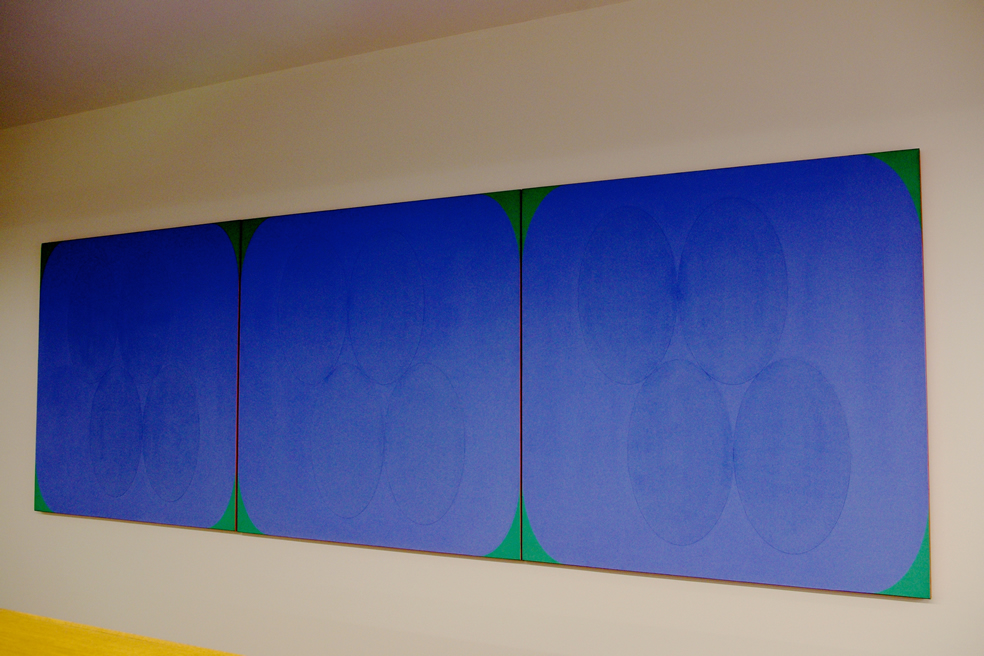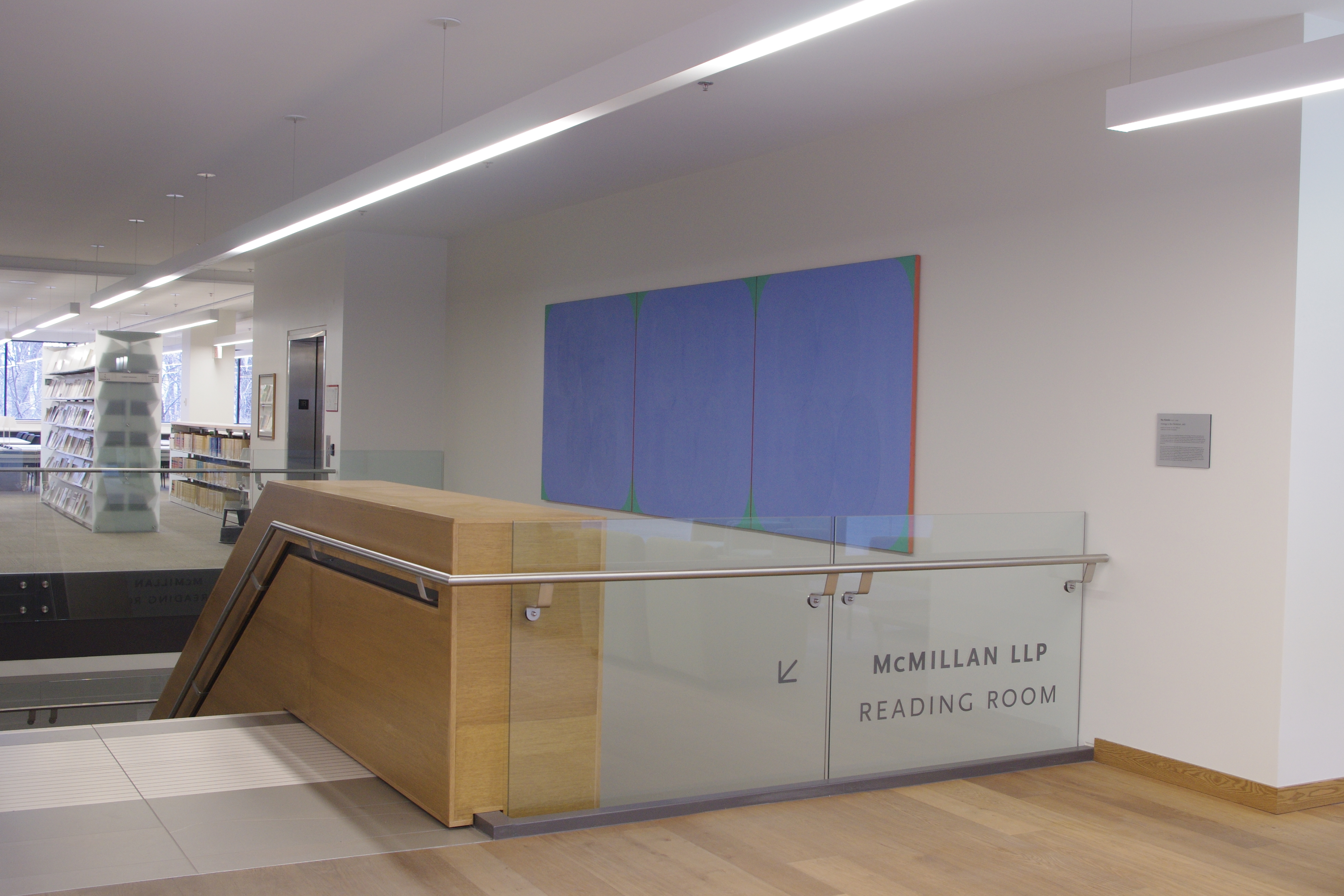We thought we'd start the new year with a new series of posts on the artworks that can be seen in the Osgoode Hall Law School Library. We thought we'd start with this piece, the largest in the library, which hangs prominently near library entrance, dominating the stairway between the library's two floors.
Roy Kiyooka (1926-1994)
Homage to Ben Nicholson, 1967
acrylic on canvas
Collection of York University
Purchased from the artist
Roy Kiyooka was a second-generation Japanese Canadian artist, poet and photographer, born in Moose Jaw, Saskatchewan, in 1926. He grew up in the Prairies and studied art in Calgary and Regina. He moved to Vancouver 1959, already an accomplished respected painter. Here he challenged a generation of artists to move beyond regional styles and seek inspiration from international art currents. In the late 1960s, he rejected painting and began writing poetry and taking photographs. As a part of the rejection of a modernist aesthetic, he eventually took up performance, film, and music. Kiyooka was one of Canada’s first interdisciplinary artists and was highly influential in Vancouver's bustling cultural scene. He was awarded the Order of Canada in 1978, not only in recognition of his work as a painter but for his significant contribution as a teacher. Kiyooka died in Vancouver in 1994.
Homage to Ben Nicholson, the painting in the Osgoode Library, was among Roy Kiyooka’s last paintings. While he was painting, Kiyooka worked in the hard-edged modernism of the New York avant-garde of the time, just as the artist referred to in the title, Ben Nicholson, had popularized the spare formalism of Constructivism in Britain before him.
The painting is a triptych of three identical panels, each five square. Across the surface of the painting, slight differences in paint application distinguish the oval forms from the serene blue ground. The subtleties of colour here are typical of Kiyooka, but the punctuating orange framing the painting allows for the levitation of the blue, while reinforcing the fundamental objectivity of the painting by counteracting the use of a conventional frame. While a viewer might infer the wide blue sweep of a Pacific vista, a concern for the painting as closed formal world, rather than a system of representation, was a defining principle of the New York modernism to which Kiyooka responded. His international modernist vision in 1960s Vancouver, a city at the time overwhelmed with regionalist attention to particulars of place and landscape, secured the artist a place in the São Paolo Biennale of 1966.
A film about Kiyooka's life was produced in 2012. REED: The Life and Works of Roy Kiyooka follows the radical times in which the artist lived, from the Beat Era to the turmoil of the 60s and redress for Japanese Canadians in the 1980s. It is an extraordinary tribute to a great artist, showing a broad spectrum of his work while revealing the personal and social history that inspired him. A trailer for the film can be viewed here.
This painting is appropriate to Osgoode for a number of reasons. The painting's modernism is contemporary with and a reflection of the spirit that saw Osgoode move from it's staid quarters in old Osgoode Hall on Queen Street to the new campus of York University. The painting was painted in 1967, the centennial year of Canadian Confederation and also the year the new Osgoode Hall Law School was designed. The law school finally opened at York 1969.
The painting is on permanent loan to Osgoode Hall Law School from the Collection of York University.



